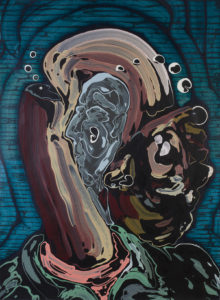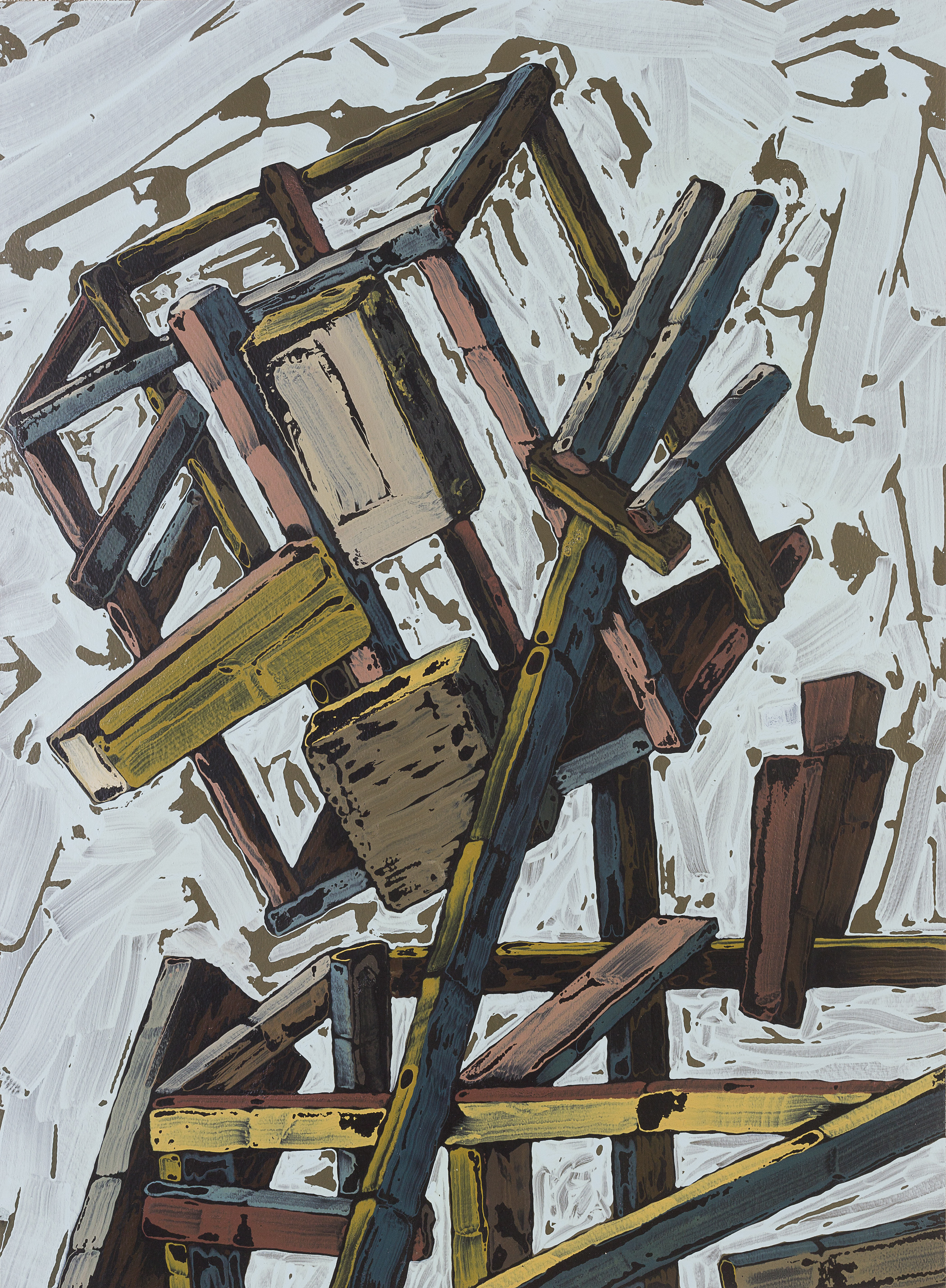Unexpected Portrait (2016) is a large-scale acrylic-on-canvas painting where a long tube-shaped orange line with dark edges glides across the work defining a cartoon-like head and shoulders. Two simple dots for eyes and a short line for a mouth are similarly distinguished from the background—a wash of transparent tones ranging from bright orange to deep blue with touches of green and purple. The work is simple and captivating.
Although Unexpected Portrait is one of the few works on canvas presented as an individual piece and not part of a grid, it typifies Nathan Redwood’s approach and sets the tone for this exhibition in which he explores portraiture—as a form of gestural abstraction—and creates unexpected and refreshing paintings that somehow personify lines, patterns and shapes. What stands out is his process of layering. Often wide translucent brushstrokes shaped like intestines fill the background. Redwood covers parts of this ground with what appear to be finger painted swashes of color, as well as other abstract shapes in varying degrees of transparency, allowing ground to meld with figure, thus creating the illusion of multiple surfaces.

Nathan Redwood, Untitled, 2016 ©Nathan Redwood, courtesy of Jaus Gallery, Los Angeles.
2016
This ambitious exhibition of more than 45 works is a departure from Redwood’s earlier surrealistic narrative paintings. Rather than have the story unfold within a single canvas, Redwood allows a quasi-narrative to develop across the different faces. He delights in the activity of painting using a variety of materials—oils, acrylic and modeling paste to build up surfaces. It is evident he enjoys exploring what a line can be and how those lines—both thick and thin, opaque and transparent—can evoke the human form.
The majority of the framed paintings on paper (all 30 x 22 inches and untitled) are contained within two grids. Seeing 30 loosely painted portraits together, in three rows of ten, is overwhelming, yet simultaneously triggers a quest for the one work that stands apart from the group. Redwood experiments with myriad painting styles, colors and textures to describe abstracted facial features. While all the images eventually cohere into faces, whom they might represent is never identified. Each individual portrait is created through gestural, swirling shapes and lines in a wide range of earthy tones. Some are purposely geometric and minimal as in a black-and-white work that resembles the head of the Tin Man while others have mechanical parts or are an amalgamation of colored speckles contained within transparent brushstrokes. Redwood paints dashes, dots and spirals in some works; while in others, he leaves blank spaces that allude to eyes, noses and mouths.
Redwood is inspired by high art and popular culture and draws from Primitivism, Expressionism, comics and machines. Surprisingly, he elicits a wide range of emotions, from hope to despair to humor as the eye travels across the grids. Collectively, the paintings ask what constitutes a face? Redwood’s answer is both a lot and very little, and his paintings reflect how gestures can express moods and feelings.


